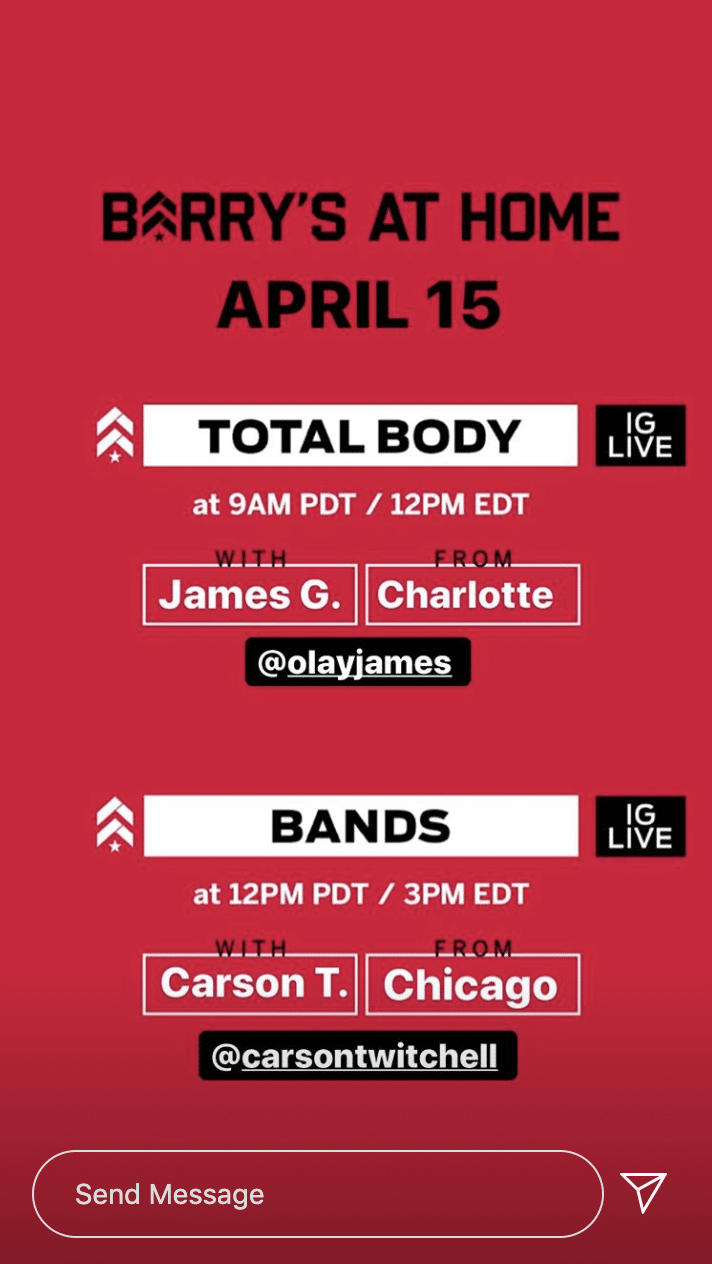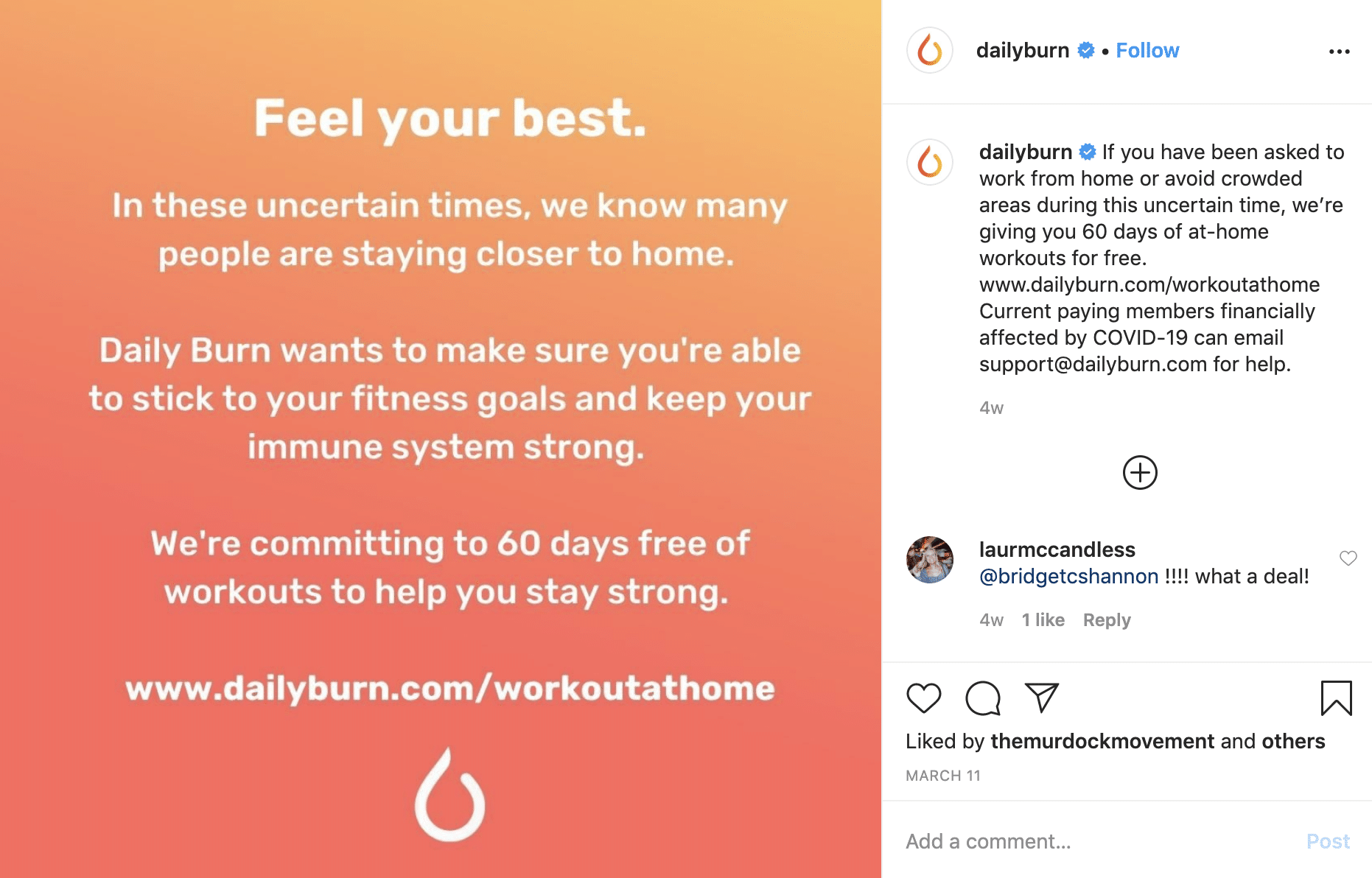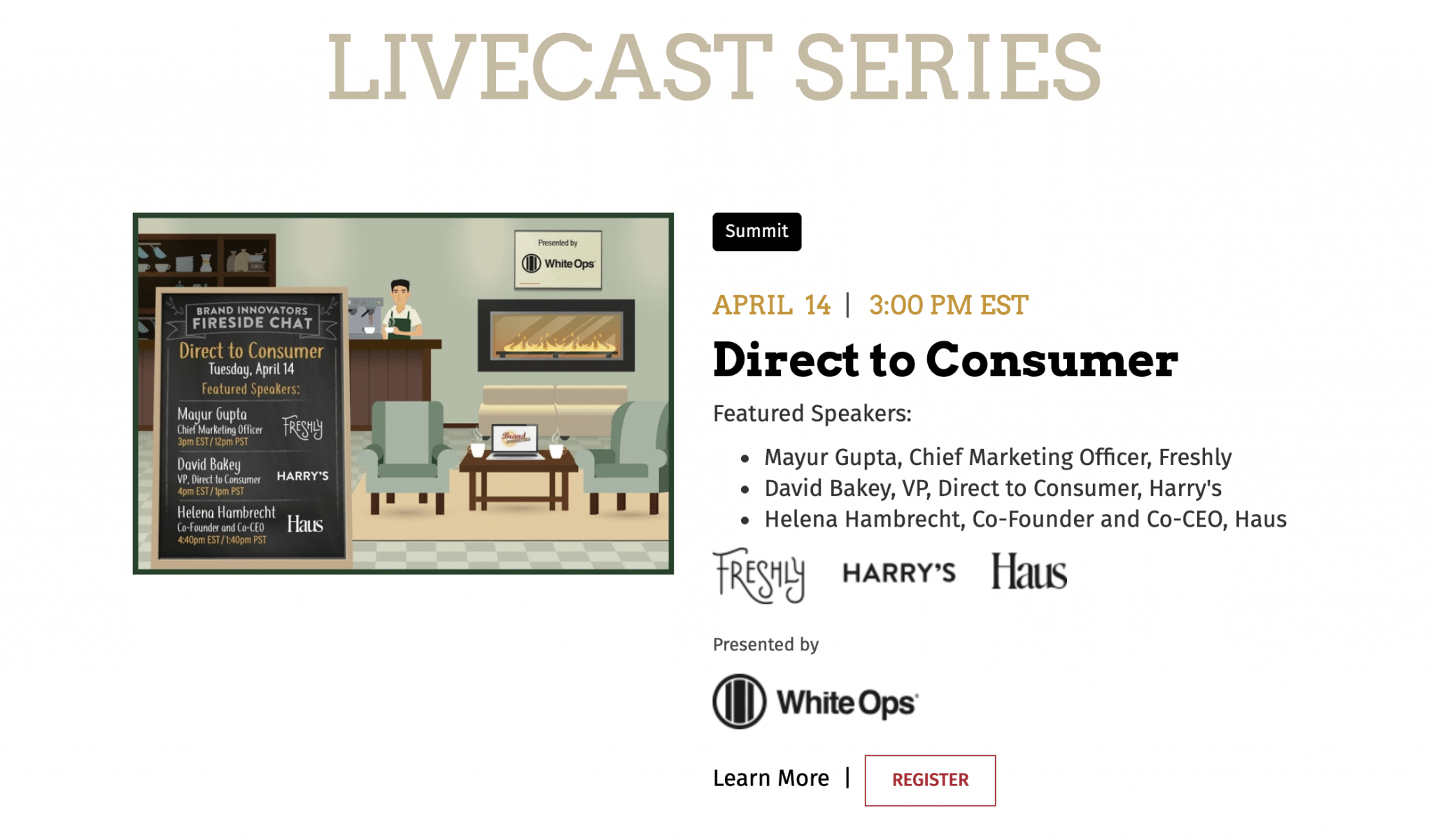To kick this off by stating the obvious: we are living in an event-free world. On a human level, social distancing has meant pushing pause on social gatherings, staying out of the office, and remaining home to protect the population.
For brands whose sole or main focus is events, the shift has been an uncertain adjustment, and it’s led to difficult—but responsible—decisions, to cancel many events.
When we say event-focused brands, we’re talking about two different categories:
- (B2C) Those that who sell event experiences to consumers
- (B2B) Those that host dinners and attend trade shows, conferences and festivals for lead generation purposes.
To all of the brands who have done their part to #flattenthecurve and dropped the idea of hosting traditional IRL events for now, and to those who’ve experienced industry event cancellations, this far from indicates that you have to shutter your doors or fall short of your 2020 plans.
Instead, it just means you have to get creative.
Here, we’ll run through just a few of the ways you can rethink and repurpose your marketing strategy, and still be a part of your audience’s days and lives.
Maybe we can’t gather in person, but in person is not the only way to gather.
Adjust your KPIs accordingly
If you’re a marketer in the position of trying to get consumers to attend live events, your KPIs might traditionally include:
- Number of tickets sold/total attendance
- Satisfaction via qualitative surveys post-event
- Return guests or attendees
Now that participation in in-person events isn’t possible, and consumer events are heading into the digital space, these same KPIs can exist, just differently, and with the addition of some more digitally-driven goals.
- Attendance still can (and should) be measured, and also viewed as leads generated to nurture for future events
- Still seek event feedback via surveys. You can also use these opportunities to share information about upcoming virtual events.
- If you’re hosting more virtual events, measure how many attendees are coming back, or set yourself up to measure the impact on the virtual attendees coming back for IRL events when the time comes
- Measure web traffic. With all of the new channels you may be using, it’s important to understand how they’re impacting traffic back to your website or landing page.
If you are a marketer that looks to business and industry-driven events for lead generation purposes, you’re (obviously) tracking leads generated. Now, amidst COVID-19, leads generated is still a major KPI, but it may look slightly different given the virtual nature of events as opposed to the traditional IRL experience.
If you host live, B2C events: your experience, but digital
Every event-focused brand knows how to set a mood and create an experience. They bring a room to life, and wow the people in it. So how, now that people can’t gather together, can brands still create these same awe-inspiring, entertaining, important experiences?
By getting creative with a wealth of digital resources.
Live Nation’s Live From Home
In regular times, Live Nation’s biggest focus comes in the form of live, in-person concerts. In this time of crisis, when concerts are off the table, Live Nation has found a way to deconstruct the live concert experience and distill it down to what it really is—an experience—and continue to bring value to its existing audience, and new audiences, too.

KPI: Online web traffic
Live From Home uses a suite of social channels and internal tools to not only bring the experience of live music to a digital audience, but also to connect audiences with their favorite artists, and create a bank of on-demand music across all genres.
The massive effort and coordination with artists comes across truly coordinated and effortless, and serves as inspiration for brands of all sizes to leverage the capabilities of social channels when considering online experiences. And, best of all, attendance online isn’t limited by geography—Live Nation’s concerts are more global than ever before, and a lot of these events are provided for free and not gated.
KPI: Lead generation to nurture people for later events
The landing pages for these events hosts a newsletter sign-up, where Live Nation can collect emails to nurture people who may later want to attend events or make other relevant purchases. In addition, the landing page highlights upcoming events that haven’t been cancelled in July and beyond, for consumers to purchase.
Fitness Brands Re-Think Offerings
The music industry isn’t the only one getting creative with digital channels to bring experiences online.
In the fitness industry, a multitude of brands—big and small—who rely on IRL classes are taking their talents to social media, to their websites, and more, and offering services to users either for free/via extended free trial periods, inclusion in existing memberships, or in the form of pay-what-you-can classes to help keep small boutique fitness studios afloat.
KPI: Traffic to website or social channels
The fitness brands offering content with no gate at all are likely targeting traffic. They won’t collect information, but they will get people to their page, to their content, and familiar with them.

(Source: Barry’s Bootcamp)
A lot of fitness brands are using social media channels, namely IGTV, Instagram Stories, and YouTube to do this, but others are doing so directly on their websites to drive traffic there.
KPI: Memberships
For the fitness companies offering more gated content, whether that’s in the form of providing payment details for an extended trial or entering personal information to receive access, they’re likely targeting future memberships.

(Source: Daily Burn)
By offering a longer trial period, these companies can simultaneously provide a great free experience for those who need it and gain future paying members in the process.
Art in the Digital Sphere
Can’t share a room? Share expertise instead.
We talk a lot about creating content that’s genuine, and a key pillar there is being an authority. This carries over cohesively for brands who traditionally spend their time and hit their goals IRL, but are now left with an empty calendar, no attendees, and the need to find new ways to connect with their audiences.
Museums and art galleries have made this adaptation particularly well, relying on the knowledge and expertise of their teams and curators.
KPI: Attendance and Sales
The Whitney Museum of American Art quickly developed a wealth of online resources from an online collection, to expert-led audio guides, to resources that educators can use to share art with students, to a newsletter signup option so they can nurture these interested people in the future. They also have an online gift shop designed much like their in-person one.

It’s not just some of the larger, well-known museums and galleries that are getting in on the expertise-sharing. Smaller galleries such as New York City’s Shrine have pivoted on the fly to create an online experience where they can still display art, sell art at a discounted rate, and highlight artists the way they do when somebody comes to a showing IRL.
Nonprofit organizations are also looking into their areas of expertise and ability to find creative ways to continue serving their audiences.
Nonprofits bring the job hunt, digitally
The One Club For Creativity, an international nonprofit organization rooted in fostering creative excellence in advertising and design, is leveraging its broad network to create an online jobs board.
Here, companies can post their open positions in a trusted environment, and potential candidates can come searching for jobs that they know have been vetted. This type of pivot allows The One Club to continue serving their audiences and be a resource.
Brands that rely on in-person events span all industries, but what’s most important is that you get creative and boil down your IRL experiences to the elements that make them what they are.
These unique reasons people gravitate towards you can still shine through on YouTube, Instagram, Facebook, or even your own website or email list. It’s about bringing it back to basics, and finding a way to stand out.
If you attend events to generate leads (B2B): meeting and networking in the digital space
From a professional events perspective, these same principles apply.
Do you rely on in-person touch points with clients to form new relationships and foster existing ones? Get creative about bringing those intimate experiences to life.
Knotch adapts to digital events.
Knotch, a content intelligence platform connecting consumers and brands online, is no stranger to providing in-person resources to businesses via IRL events, and has quickly pivoted to delivering this same value online.

KPI: lead generation
Knotch is hosting live marketing roundtables and creating podcast content out of them, too, making it convenient and interesting for attendees to tune in and take part, and for Knotch to connect with their audience and both generate and nurture leads.
Brand Innovators leans into fireside chatting.
Brand Innovators is getting in on the virtual opportunities, too, with daily fireside chats featuring speakers from brands across verticals, with each chat focusing around a different topic.
KPI: Lead Generation
Registration requires name, email, company, title, and location, instantly turning participants into leads to nurture now and in the future.

If you host these types of events
Are you a company that runs corporate training sessions? Keep the clients you had booked for 2020 by adapting your program to a virtual stage.
Do you facilitate industry-specific networking events? Get creative with bringing them online. Perhaps with the time you’d normally spend gearing up for an event, you can learn about participants and place them into Zoom groups by interest, or have attendees write up a blurb about themselves along with their contact information that you can turn into a virtual directory and connections can be fostered that way.
Social Media Week goes Virtual
Social Media Week, a regularly-traveling conference hosting social media and marketing professionals across industries and functions, will be making an unprecedented move to hosting its conference entirely online.
KPI: Lead generation and nurturing for future events
This will include speakers, breakout sessions, and the same networking opportunities afforded to participants who typically attend IRL. By asking potential participants to register interest, SMW not only assesses interest for this particular event, but they also build out a list of leads for future events that can be held in person again.

Microsoft Build goes Virtual, Too
Microsoft Build will be following suit creating an unprecedented virtual event where developers can absorb knowledge from experts, meet and collaborate with others in their industry, and as Microsoft is saying, code together but separately.
Similar to Social Media Week, Microsoft asks those who are interested to sign up for updates. This helps build out the list for this event as well as leads for future ones.

Until it’s safe to gather IRL…
We commend the many brands, companies, and institutions doing their parts to support people, support businesses, and support their teams.
We don’t yet know when people will gather again to see a concert, spend time at a museum, or network over cocktails and light bites, but what we do know is that there are ways to come together for these interactions in a non-traditional sense.
As more and more experiences go online, or change shape into digital material, marketers go back to the drawing board on which KPIs are most important now, as well as in the future when events resume.
We’re living in an event-free world, but we’re also living in a world where the possibilities for virtual human interaction have never quite been so vast.